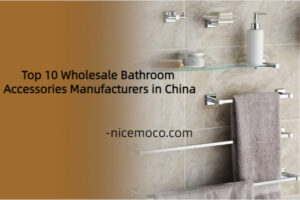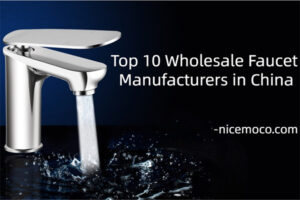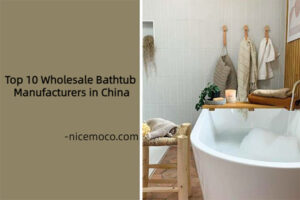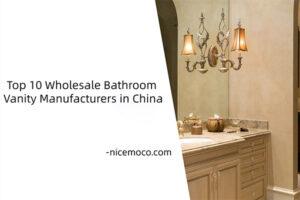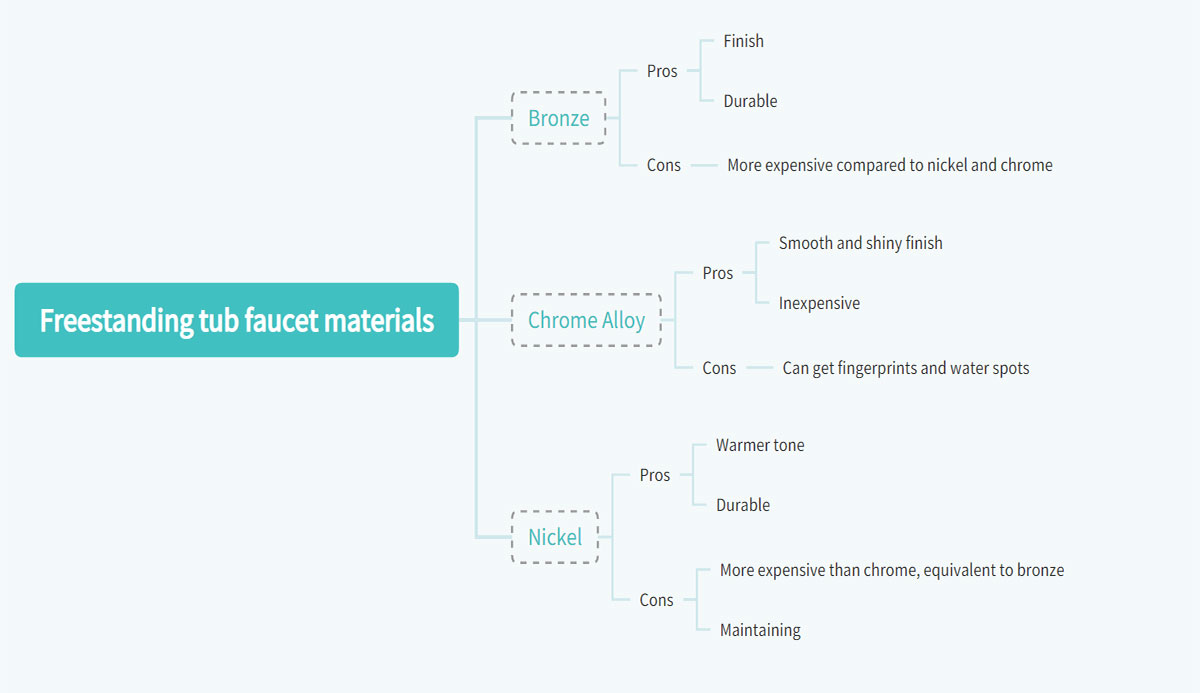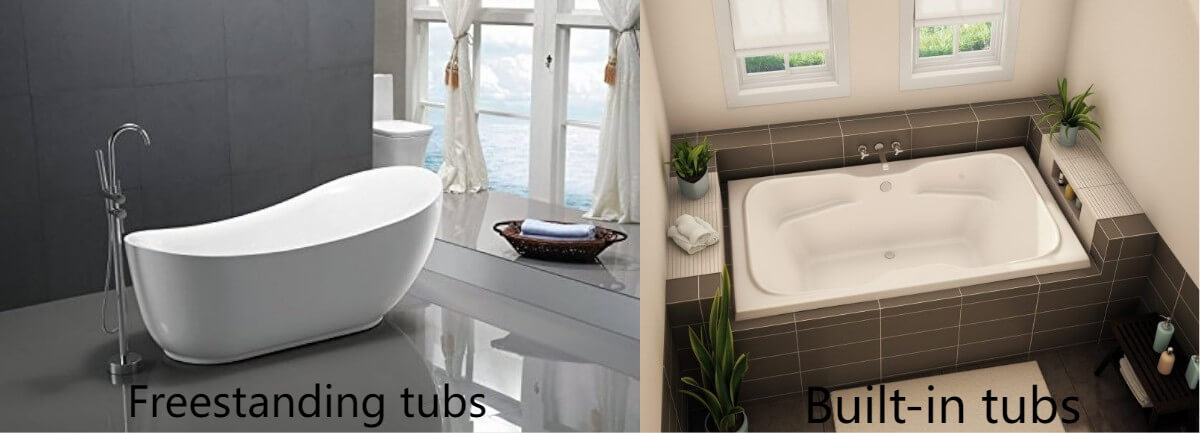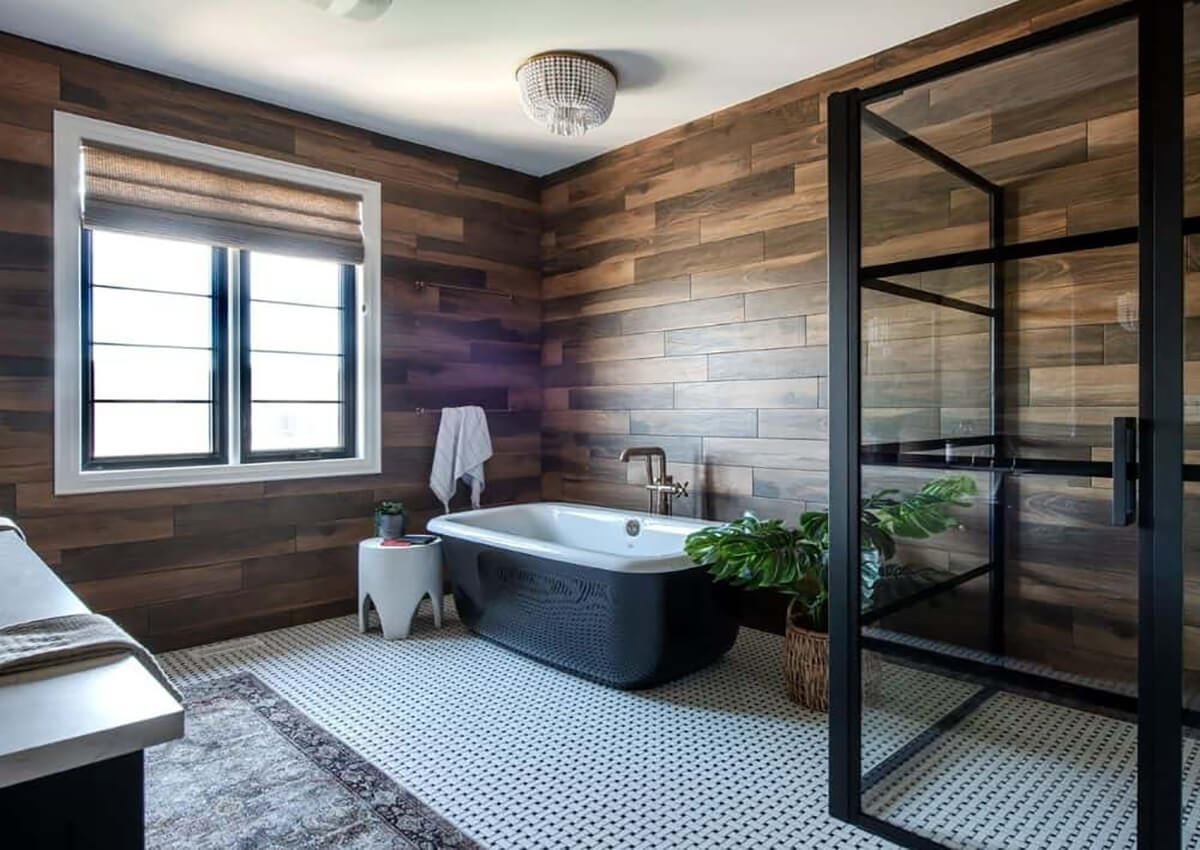As with most homeowners’ choices, choosing a new freestanding bathtub can be a daunting task. But a freestanding tub gives your bathroom a unique feel unmatched by other alternatives. Freestanding bathtubs are uniquely designed and offer a variety of flexible options to fit almost any budget. Choosing the right bathtub can make your bathroom a quiet oasis of comfort and safety, so let’s get started.
1. Pros and cons of freestanding tubs
The following are the advantages and disadvantages of freestanding tubs.
1) Pros: Choice
Freedom to choose is a wonderful thing. With a freestanding tub, you have the freedom to create any size tub that suits your preferences. Whether you want a classic claw foot or a more modern sleek design, the choice is yours.
2) Pro: Installation
Freestanding bathtubs are self-contained, which means they are very easy to install.
3) Pro: Appearance
Freestanding bathtubs have a unique look that continues with the quality of the materials used in their construction, which also gives your bathroom space a distinctive sense of luxury.
4) Pros: Place
Similar to installation, placement means you can actively decide where your tub will go. With no adjoining walls to install, a freestanding tub gives you the freedom to creatively arrange your bathroom the way you want.
5) Cons: Price
The freedom of choice does come with a little bump, as freestanding tubs are usually more expensive than built-in tubs, even with installation costs.
6) Cons: Weight
Freestanding tubs are also a bit heavy, so only mount them on a reinforced floor that can hold the extra weight. Keep in mind that they are also larger in size, which means they will carry more water weight in addition to their normal weight, so plan accordingly.
(Another related post: Custom Bathtub: An Ultimate FAQ Guide)
2. Freestanding tub dimensions and specifications
Common or standard dimensions for a freestanding tub are 60 inches long (5 feet), 30 inches wide (2.5 feet), and 19 inches deep (1.89 feet). A small freestanding tub measures 55 inches (4.58 feet) long by 27 inches (2.25 feet) wide and has a water depth of 15 inches (1.25 feet). Large freestanding tub starts approximately 72 inches (6 feet) long by 32 inches (2.67 feet) wide with a water depth of 20 inches (1.6 feet). But keep in mind that style can greatly affect your overall size.
Small to medium-sized bathtubs tend to be the more popular choice because they take up less space and are easier to climb in and out of. Larger sizes, while aesthetically elegant and luxurious, can be difficult for small children and the elderly to use.
3. Freestanding tub material
Common materials for freestanding bathtubs include cast stone, acrylic, cast iron, fiberglass, and resin stone. Each has its own unique advantages and disadvantages, so research thoroughly before buying.
1) Resin Stone
NICEMOCO bathtubs are made from a mixture of acrylic polymers and natural minerals, usually resins.
Pros: Aesthetics
Stone resin comes out as a very aesthetically pleasing material that will give your bathroom space a very modern look, while the actual color of the stone resin bathtub will not fade with repeated water use
Pros: Excellent heat
retention Stone resin holds heat longer than regular tubs, meaning your water will stay warm for longer, which means longer soaking times.
Pros: Durable
stone resin can withstand heavy penalties without fear of damage. The material is also non-porous, which means it won’t absorb water and crack over time, further extending its incredible longevity.
Pros: Easy to clean
Stone resin is easy to maintain and clean, as most stains and mildew can be washed off with simple warm water, while a lightly abrasive substance can be used for more stubborn residue.
Cons: Higher quality, but more expensive.
It may seem pricier compared to other bathtubs on the market, but a resin stone bathtub is a quality long-term investment for your bathroom space.
2) Cast Stone
In order to create cast stone, cement is mixed with pigments and crushed natural stone to give it a more natural appearance look. Universally accepted as an alternative to sandstone, limestone, coral rock, granite, slate, and other natural stones.
Pros: Versatility
There are a variety of options for cast stone since the material is man-made. Color and style are therefore flexible and ultimately up to you, giving you the freedom to match the tub with whatever you want.
Pros: Affordable
Compared to most bathtubs on the market today, cast stone bathtubs are very affordable. Affordability also gives you more options when customizing your bathroom space.
Pros: Easy to clean
Since the material has a cement base, it is very easy to clean and maintain by conventional means. Most stains can be removed easily with warm water and baking soda
Cons: Aesthetics
Since the material is man-made, it may not appear pristine or authentic compared to natural stone. It may also fade badly over time with repeated use.
Disadvantages: poor durability
As the material is available in a wide variety of natural stones, it tends to be less durable compared to other materials on the market, a lot depends on the quality of the stone chosen, and the material is porous, as The passage of time can cause cracking.
(Another related post: A Buying Guide for Freestanding Bathtubs)
3) Acrylic Fiber
Acrylic bathtubs are made from solid sheets of petrochemicals, stabilizers, resins, fillers, and dyes, which are then heated and molded into the shape of the bathtub, and then reinforced with fiberglass.
Pros: Non-porous
Acrylic tubs are non-porous, which means they won’t absorb water. Therefore, the material is less prone to cracking than other bathtub materials such as fiberglass.
Advantages: The insulation is poor
Thermal insulation The insulation effect of the acrylic bathtub is very poor. This means your water won’t stay warm for long.
Cons: Material can warp
Unfortunately, like fiberglass, acrylic tubs can warp over time with repeated use. The consistency of the material can become unstable, creating raised or uneven ridges on the bottom of the tub
Cons: Expensive
Although acrylic bathtubs are more durable compared to fiberglass, they are quite expensive compared to other similar durable bathtubs on the market. Also, keep in mind that if any damage occurs, you’ll need to replace the entire tub, which makes the cost much higher.
4) Cast Iron
Cast iron bathtubs are made by pouring molten iron into a bathtub mold, then sanding it smooth and covering it with a protective layer of enamel.
Pros: Durable
Cast iron bathtubs are probably the most durable bathtubs on the market. The material is capable of withstanding high impacts and is also highly resistant to scratching or chipping.
Pros: Easy to Clean
Cast iron tubs are very easy to clean, as warm water and baking soda usually do the trick. Of course, abrasive cleaners can also be used without damaging the tub.
Pros: The average heat
Retaining cast iron will hold its heat longer than a regular bathtub, which means your water will stay warm for longer, which means longer soaking times.
Cons: Very Heavy
While cast iron can be extremely durable, the material also tends to be quite heavy. Make sure your floor can support the extra weight of the tub, especially when full.
Cons: Expensive
While there are many benefits to owning a cast iron tub, it may be out of your current budget as they start at around $1000, so research accordingly.
(Another related post: Bathtub Buying Guide)
5) Glass Fiber
Fiberglass bathtubs are made from reinforced plastic, which is then molded in layers, molded into the shape of the bathtub, and then coated with a layer of gel coat resin. is a reinforced plastic that is formed in layers and then molded into the tub shape before being coated with a layer of gel coat resin.
Pros: Affordable
Fiberglass tubs are probably the cheapest on the market. Starting at around $200, you can easily build your bathroom space on a simple budget.
Pros: Easy to install
Fiberglass is very lightweight, making it a breeze to do it yourself or DIY. It is also beneficial when replacing this tub on the road due to any damage that may occur.
Cons: Very brittle
Fiberglass also happens to be very cheap in its construction. This material cannot withstand any heavy or sustained impact and therefore shatters easily.
Cons: Will Warp
Over Time Fiberglass can “bend” over time, causing it to warp over time and feel unstable, forming rivets and pockets. The material is also porous, which means it absorbs water, which combined with natural bending can cause cracks in the material.
(Another related post: Bathtub Refinishing FAQ Guide)
4. Freestanding tub style
Bathtubs come in many different styles, but the most common bathtubs seen today are more contemporary, round in design, or the classic Clawfoot. The more modern and classic approaches are very similar, allowing you to lie down completely and soak while still providing standing room for the shower option. The round design is better suited for soaking only and much smaller homes that cannot accommodate the former.
1) Modern
For those who want a sleek, contemporary design, there is a wide variety of bathtubs to suit your needs. Oval bathtubs are the most common, but if you wish, you can design and customize any number of shapes to suit your needs. Generally speaking, this type of bathtub is between round and claw, with great emphasis on flexibility.
2) Round
For those in tighter spaces, round bathtubs are seen as a great solution. Often tucked away in a far corner, these tubs are ideal for long soaks, as they submerge your body up to your shoulders and have an integrated seat built in.
3) Claw Foot
The more traditional bathtub, which has been around since the 1800s, is still a popular style today. Typically found in single- and double-ended, single-slipper, and double-slipper designs, they come in a variety of designs for any home looking for a more classic bathtub feel.
(Another related post: Top 10 Bathtub Manufacturers in 2023)
5. Freestanding tub faucet types
We will introduce freestanding tub faucets from below three aspects, including installation types, faucet style, and faucet materials.
1) Freestanding tub faucet installation type
When it comes to faucets, you have two options: floor-mounted and wall-mounted. Both are available in single-handle and double-handle models and since the features are similar, it will come down to personal preference.
#1. One-Handle Floor Mount
Floor-mounted faucets are usually installed on the edge or back of the tub. Easy to install, just attach the end you want to the top of the tub and make sure it’s anchored to the floor. Temperature and flow are controlled by one handle.
#2. Double Handle Floor Stand
A floor-mounted faucet mounted on the rim or back of the bathtub. Easy to install, just attach the end you want to the top of the tub and make sure it’s anchored to the floor. Dispose of hot and cold water by turning the handle in a single direction. Beautiful, but might take some getting used to.
#3. Wall Mount
Wall-mounted faucets are available in single-handle and double-handle types and are installed through the wall. While it may be more aesthetically pleasing in your bathroom space, wall mounts often require reworking some of your plumbing and are more of a hassle to install, so plan accordingly.
2) Freestanding tub faucet style
Taps come in a variety of styles, with the most popular being the Telephone, Victorian, Contemporary, and English. Choosing a faucet is more a matter of personal preference, as they function very similarly.
#1. Telephone
A telephone faucet is a style of faucet popular in the 1950s, shaped like an old telephone set. The faucet is located on two bracket arms that you can easily remove for washing needs.
#2. Victorian Era
A vintage faucet is exclusive to bathtubs from the mid-1800s. These can be long, with a sloping top, resembling an elephant trunk, and are usually operated with two handles.
#3. Modern
Modern faucets have a more conservative and compact design but still retain most of their functionality. Instead of flowing in one continuous stream, the water is fanned out, which makes the water more evenly distributed and less dangerous to small children. Modern faucets are most popular in smaller homes.
#4. English
English taps are similar to Victorian taps but are slightly shorter and are usually made of nickel or bronze. These are generally not as popular as Telephone, Victorian, or Contemporary styles.
(Another related post: Bathtub Refinishing VS. Bathtub Reglazing: What is the Difference?)
3) Freestanding tub faucet materials
Faucet materials can also come in many different forms, but the common materials you’re most likely to find are bronze, chrome, and nickel. Ultimately, the material you choose will depend on the color scheme of your bathroom space as well as your existing fixtures.
#1. Bronze
Bronze, or Oil Rubbed Bronze, is a chemically darkened finish designed to simulate aged bronze.
Pros: Finish
Bronze has a smooth finish that allows you to easily match a variety of tub styles. This material is therefore also available in a variety of variants, giving you the freedom to choose the material that suits your bathroom space. This material pairs well with a more rustic or classic aesthetic.
Durable
The durable bronze shade is also durable, meaning your finish won’t fade or fade easily with heavy water. It’s also easy to maintain and polish, just wipe it down with water every once in a while to maintain the finish.
Cons: More expensive compared to nickel and chrome
While bronze has many advantages, it is also the most expensive finish compared to nickel and chrome, so check your budget.
#2. Chrome Alloy
Chrome plating includes chrome plating on copper or brass.
Pros: Smooth and shiny finish
Chrome has a smooth and shiny finish that goes well with most bathroom spaces where you want your fixtures to stand out.
Inexpensive
For a bright sheen, chrome is also inexpensive compared to other faucet materials on the market, meaning it can easily fit into almost any budget bathroom space with ease.
Cons: Can get fingerprints and water spots
While it’s durable, Chrome unfortunately also gets fingerprints and water spots over time. Regular maintenance should be maintained to remove any stains that could stain the finish.
#3. Nickel
Polished nickel finish is nickel plated on brass, then fully polished.
Pros: Warmer tone
Polished nickel has a warmer tone than other materials such as chrome. The polished nature of the material will add extra warmth to any bathroom space. This material pairs well with more contemporary finishes and aesthetics, often in cooler or lighter colors.
Durable
Polished nickel is extremely durable and able to withstand heavy punishment without scratching or damaging the finish.
Cons: More expensive than chrome, equivalent to bronze
While more aesthetically vibrant, polished nickel is also more expensive compared to other materials.
Maintaining
Polished nickel requires constant maintenance to maintain the finish, otherwise, it will lose its luster. Like Chrome, the material is subject to fingerprints and water spots, so be careful when cleaning it.
#4. What is the best material for a freestanding tub?
So what is the best material for a freestanding bathtub? Acrylic is by far the most popular choice because it offers a good balance of durability, versatility, and affordability. Acrylic freestanding tubs are available everywhere, which means less installation and repair costs. Other materials have their own advantages over acrylic, but they require customization and are more expensive to change and alter.
(Another related post: How to Repair Chips & Cracks in Bathtub?)
6. Freestanding tubs vs. Drop-in tubs
When comparing a freestanding bathtub to a built-in bathtub, there are actually many advantages. Built-in ones are more affordable, which means you can fit them into your budget more easily. Plumbing is also easier, as many homes already support built-ins, and they’re easy to clean and replace.
However, recessed ones also lack space and installation flexibility, as they must always be flush with the wall to install. This lack of flexibility also extends to the choice of style and material, as you have fewer options when it comes to choosing a built-in or built-in bathtub. Lastly, they lack aesthetic appeal overall, as they don’t offer a truly unique style to your bathing experience.
7. Freestanding tubs vs. Built-in tubs
Freestanding bathtubs, on the other hand, offer a variety of options in terms of style, overall design, and materials used. You have more freedom when choosing materials and placing them in your space. They have a unique look and feel that built-in bathtubs cannot match. Additionally, they are very easy to clean and maintain due to the many popular materials used in their construction, and although they are more expensive compared to built-in tubs, many are now affordable. Also, check to see if your floor can support the extra weight, as freestanding tubs are much heavier than recessed tubs.
Ultimately, the freestanding tub that’s right for you is the one that’s right for your bathroom. Their modern and versatile design is unmatched by any other bathtub on the market. Remember, the right bathtub is the one that makes you feel most comfortable because, after all, you are the one using it.
(Another related post: How to Install a Bathtub?)
8. Frequently asked questions about freestanding tubs
The following are frequently asked questions and answers about freestanding tubs.
1) Can a modern freestanding tub also be used as a shower?
Yes, a modern freestanding bathtub can turn into a shower as long as you make a few small adjustments. First of all, there are various shower heads for any height, plus, you can install curtains and install them to create a shower.
2) Is the freestanding tub comfortable?
Yes, freestanding bathtubs are very comfortable and therefore popular. However, your comfort level will largely depend on the materials used and the style of the tub
3) How much do they charge?
Freestanding tubs start at around $1200-$2900. Depending on the quality and material of the bathtub, the material can greatly affect the cost. Spending the extra money on a quality material like resin stone may be a better long-term investment because of the longer-lasting properties of the material.
4) How to install a freestanding tub
Installing a freestanding tub is a relatively simple process that requires only a few steps, depending on your current plumbing setup. For a detailed overview of how to install a freestanding bathtub.
5) Whether to install a floor drain for a freestanding bathtub?
While there are many drain styles on the market, your tub doesn’t need a special drain. Installation is very easy and there are many kits available if you want to do it yourself.
6) What are freestanding tubs made of?
Since many of them are custom-made, freestanding tubs can come in a variety of materials. However, solid surfaces such as cast iron, acrylic, stone resin, and copper are the most common
7) How to fix a freestanding tub to the floor?
In short, you don’t. Most freestanding bathtubs are so heavy that their weight will tether them to the floor. If you have doubts or concerns, there are some DIY fasteners you can use to make it more secure in your bathroom space, but they are usually not needed.
8) How many people can a freestanding tub accommodate?
Freestanding tubs typically hold 1-2 people, depending on the size
9) How far should the freestanding tub be from the wall?
The distance between the bathtub and the wall should be between 15-18 inches or at least 1 foot.
10) Can a freestanding tub have a spray head?
Yes, freestanding tubs can be fitted with jets, and Japanese-style tubs with pressurized jets for comfort, but of course, these must be custom-made and may not be easy to install.
(Another related study case: Bathroom Vanity Orders from the United States)
9. Conclusion
The above is our collation of relevant information about the independent bathtub, I believe that after reading this article, you will have a further understanding of the independent bathtub. If you are looking for a reliable freestanding bathtub manufacturer, Nicemoco is a good choice.
How useful was this post?
Click on a star to rate it!
Average rating 5 / 5. Vote count: 5
No votes so far! Be the first to rate this post.
